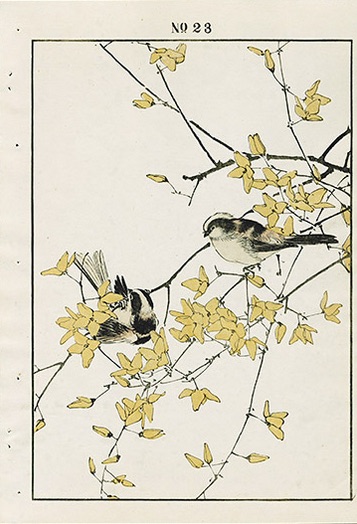Ahh, early spring has sprung! And here’s the brilliant yellow of the ubiquitous forsythia!
Named for William Forsyth, Forsythia suspensa (weeping), a member of the Olive family, was first discovered in a Japanese garden in 1784 and came to Holland in 1833 through East India Company connections. Another species, Forsythia viridissima (green stemmed), was found in a mandarin’s garden in China. Soon it was widely planted in European gardens but was still rare in the states mid 1800’s but began to appear by the 1880’s. Crosses between these two (Forsythia intermedia) proved quite variable and led to many cultivars. During WWI, plant scouts discovered even more species in China where forsythia’s obscure fruit was made into anti-inflammatory medicine.
What forsythia has going for it:
1. It’s tough and reliable, tolerates heat, winter cold and poor soil
2. The upright varieties make a nice border
3. The weeping varieties look great falling over an embankment or wall.
4. It can be easily forced to make floral arrangements and bends to shape, brilliant color
5.It can root easily from cuttings (taken from November to February) or from layering— a branch on the ground with a weight.
6. It looks best allowed to grow gracefully but some people have been known to shape them into meatballs
7. Deer won’t eat it.
Cons:
1. It is a stoloniferous plant that roots rapidly, is hard to remove and some consider it invasive.
2 Forsythias can eat a lot of territory and little can grown under them. They can grow 2 or more feet per year.
3. Although it blooms early, native bees don’t use it as a pollen source-flower shape may be an issue for them. Spicebush is a suggested alternative.
4. Can have blossoms blasted by freezes, occasionally affected by knobby gall and twig blight.
Interesting tidbits from here and there:
In 1955 Showy Border Forsythia is cited as the second favorite shrub in the US, best for hedges and screens because it grows most sturdily upright. Forsythia is seldom seen at its best for it is rarely given enough room to grow.
In the early 1950’s nursery men, garden clubs and other groups banded together to hold a “planting bee”– landscaping and planting grounds around schools, churches and public buildings. Now the areas are beauty spots and points of local pride. To this end, Ithaca NY set out hundreds of forsythia bushes in a campaign to become the Forsythia City.
1912 Decorations of jonquils and forsythia were set about the house…
1899 Ad: Hardy flowering shrubs Althea, Almond, Berberry, Dutzia, Forsythia, Hydrangea, Japan Quince, Spirea, Snowball, Weigela @25 cents each.
From 1880’s short story: “In the south window was a jar full of green things –alders and willow and long sprays of forsythia starred with gold. No florist had things like that!”




1 comment for “Forsythia–Standard Spring Shrub”